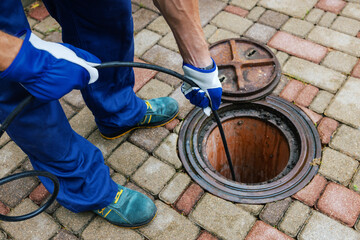Performing a thorough Sewer Scope Inspection Near Me on your property can help determine if you need repairs. You will find out about common defects causing your sewer line to clog and the signs of a damaged lateral sewer line.

Getting a sewer scope inspection is important when purchasing a home. A professional plumber can help locate clogs and other problems with the sewer. These professionals can inspect hundreds of feet of plumbing. A sewer scope can save a homeowner money in the long run.
The cost of a sewer scope can be as low as $150 and as high as $4,000. If the scope is coupled with other services, the price can increase. For example, a video inspection may be $250 to $300, while a one-hour cleaning may be $175 to 750.
You can go with a simple camera if you’re not willing to pay a lot. This will record your clogs, and provide suggestions on how to fix them. These can be purchased or rented for as little as a day, and may require an extra fee if you have a hard-to-reach location.
During a sewer scope inspection, you may see signs of a damaged lateral sewer line. A damaged lateral can cause problems for your property. It can also affect your health. Water can back into your home when a sewer system is clogged. This can cause damage, mold, and even health hazards. It can also create a hazard for rodents. These pests live in stagnant water, and a broken pipeline can attract them.
You should have your sewer line inspected if you see insects or spongy substances on your floor. The ground around your home can be eroded, and you will likely need a foundation repair. If you have a leaky pipe, it can cause mold. Tree roots can block sewer lines. They can push through the smallest cracks in a sewer line and cause sewage backup. These root systems can get expensive to remove. Having a sewer line clogged with roots is not a fun experience. It is costly and can cause major problems with your plumbing system. It may also cause your septic system to break down.
When tree roots grow inside your pipe, they can absorb a lot of water. The roots can expand to fill any cracks in the pipe. This causes the drain to become slow. The water can then build up and cause overflows. This can be hazardous, lead to sinkholes, and threaten the foundation of your house.
There are different ways you can get rid of the problem. Some people use chemical root control to kill the roots. Other people use rock salt to get rid of the moisture. It is important to find the source of the problem before attempting to fix it. A plumber will check your sewer line for problems and discuss several options with you.
During a sewer scope inspection, the inspector will use specialized camera equipment to examine the sewer lines in the home. This is a good way to find hidden defects that could cause future problems. It is important to have this done if you are purchasing an older home.
A good inspector can detect root damage before it becomes a larger problem. The inspector will also look for signs of tree root damage. This can cause lateral sewer line problems.
During a sewer scope, the technician will mark any defects in the pipe that require action. They will also note whether the pipe is in good condition or not. This information will be used to develop a report.The inspection will also identify the material the pipe is made of. Older homes may have clay or concrete sewer lines. These pipes can be very brittle and susceptible to issues.
Performing a sewer scope inspection can save you time and money. This is particularly true if you are buying a home. By identifying issues early, you can take action to remedy them before they get worse. You can also negotiate a better price for the home.
A typical sewer scope involves a camera system, which includes a monitor, camera, and scope. These systems are relatively small, which makes them easy to transport. The video feed is sent back to the inspector’s monitor. There are many signs that you should look for to determine the condition of the sewer line. Some of these include exposed aggregate, a sign of a concrete pipe failure. An inspector’s report should be thorough, displaying details about the sewer line’s condition.